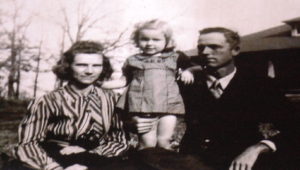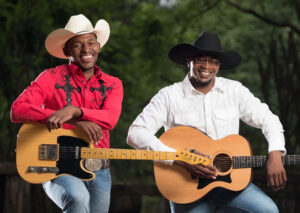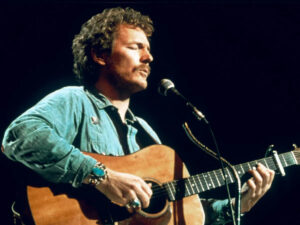Carl Perkins – everybody’s rockin’ tonight
Editor’s Note:
This is the second of two articles about the Memphis region and the Country Music scene of the 1950s.
Dr. Shawn Pitts lives in Selmer, Tennessee. Cinema fans may recognize Selmer as the County Seat of McNairy County, Tennessee. The film “Walking Tall” made McNairy County Sheriff Buford Pusser famous.

Dr. Pitts has served in many positions for the Tennessee Folklore Society including President. In addition, Pitts has written on music subjects for Southern Cultures at UNC, The Bitter Southerner, The Daily Yonder, and Salvation South, among other periodicals. Pitts has also served on the boards of Tennessee Arts Commission, Humanities Tennessee, he Tennessee Folklore Society, and the steering committee for the West Tennessee Blues Society.
Part 2 of Hillbilly Bop: The Other Memphis Sound” focuses on Carl Perkins who recorded Blue Suede Shoes prior to Elvis Presley. Pitts presented an excellent discussion of Carl Perkins and the Stanton Littlejohn materials at the 2012 Tennessee Folklore Society. Several photos from the 2012 Tennessee Folklore Society setting are in cluded in the discussion. In 2019, Pitts coproduced “Discovering Carl Perkins” based on his research and digitization of the Stanton Littlejohn materials discussed here in Part 2 of his Hillbilly Bop discussion.
As mentioned in “Hillbilly Bop Part 1” this discussion further illustrates the complex nature of Country Music, its development, and its relationship to other forms of Roots Music. The African American influence on Country Music continues to fascinate scholars, artists, journalists, and fans. The murder of George Floyd in Minneapolis, Minnesota unleashed a wide variety of forces…or at very least strengthened and accelerated the forces…related to the existence of African Americans who were Country Music fans as well as Country Music Artists.
And then there was Carl Perkins.
Scarcely more than three months after the release of That’s Alright, a rangy, country guitarist turned up at Sun Records eager to audition. One look told Sam Phillips the kid was country as cornbread. He would later recall “I knew Carl could rock…[but] I was so impressed with the pain and feeling in his country singing, that I wanted to see if this was someone who could revolutionize the country end of the business.”
Consequently, Carl Perkins’s first Sun single wasn’t a Sun single at all, nor was it the sort of material one might expect from the future standard-bearer for rockabilly music. It was a cry-in-your-beer, honky-tonk weeper released on Phillips’s experimental country label, Flip. Perkins’s Turn Around (Flip 501) was the first single issued on Flip and, perhaps unsurprisingly, the second title on the short-lived label was Lonely Sweetheart (Flip 502) by the Snearly Ranch Boys.
It was the Ranch Boy’s one and only appearance under the band name on any of Phillips’s ventures. It doesn’t take an expert to hear the common thread running through the music of Carl Perkins and the Ranch Boys, or that what followed from the up and coming Perkins was far more country than rock ’n’ roll.

Carl Perkins came to Memphis from Jackson, Tennessee, by way of the deeply rural Lake County, Tennessee. He had grown up admiring and imitating the vocal styles of the Grand Ole Opry stars and honky-tonk artists of the 1940s—especially Earnest Tubb—but was powerfully influenced by the field hollers, and guitar styles of African American neighbors in the cotton country of Tennessee’s Mississippi River Delta.
The result was a white country artist who was equally at home with the blues, so much so that he had incorporated popular R&B tunes into the live sets he played for redneck patrons of the honky-tonk bars of rural West Tennessee. They ate it up.
Perkins is emblematic of the hillbilly R&B amalgam associated with Sun, but he was more the rule than an exception. The number of white country artists who streamed into the Memphis studio with the same capacity for blending black and white identified musical forms verified Perkins lifelong assertion that rockabilly was a natural outgrowth of the mid-South’s rich, biracial, musical milieu. Though he never claimed personal credit for the development of rockabilly, Perkins was, perhaps, among its earliest and most authentic voices and he is widely regarded as a paragon of the form. A pair of recently rediscovered discs lend credence to that view.

Two lacquers in the archive of amateur audio engineer, Stanton Littlejohn, of Eastview, Tennessee, capture a young Perkins performing R&B standards Drinkin’Wine Spo-dee-o-dee, and Good Rockin’ Tonight, as well as Eddy Arnold’s country hit, There’s Been a Change in Me, and the the old-time string band instrumental, Devil’s Dream.
The earliest of these sides—the hillbilly and old-time tunes—were recorded by Littlejohn in 1951, more than three years before Perkins’s arrival at Sun. Those sides demonstrate the teenaged artists’ earliest influences, while the honky-tonk tinged R&B tunes—in all likelihood recorded in later session—reflect the evolving style that gave the world Perkins’s original rockabilly anthem, Blue Suede Shoes.
Whether it was Snearly Ranch veterans effortlessly complimenting Jerry Lee Lewis’s boogie boogie piano, The Starlite Wranglers reworking blues and bluegrass standards with Elvis Presley, or Carl Perkins effortlessly belting out honk-tony rhythm and blues, the country roots of Sam Phillips’s legendary Sun sound were right on the surface.
A careful examination of the Sun catalogue reveals an astounding range of white performers—many unknown or underrated—with varying degrees of “rock” and “billy” informing their creative choices. Most of them self-identified as country artists and were promoted as such by Phillips.
Early critics called the music Sam Phillips put in the market “hillbilly bop,” and labeled Presley, its first dazzling practitioner, The Hillbilly Cat. “Bop” and “cat” were oblique references to African American culture, but “hillbilly” unambiguously asserted what contemporary commentators believed to be the foundation of this new, hybrid music.
New may be an overstatement. Scholars have long acknowledged the debt honky-tonk, western swing, and bluegrass owe to blues and jazz, but there can be no doubt that rockabilly represented, if not an erasure of the musical color line, at least a flagrant assault on its enforcement in the record industry.
Blues Suede Shoes was the first record to simultaneously land on the country, R&B and pop charts, signaling the broad appeal of hillbilly bop, not to mention a period of head-spinning readjustment for the commercial music industry. The well-worn phrase, “rockabilly moment”, is right on the money; the craze was almost over before it got started.
The decline of the genre coincided with resurgent interest in American roots music. The folk blues revival of the 1960s placed African American influences at the forefront of the rock ’n’ roll origin story, while country claimed Appalachian folk styles as their own, effectively, if temporarily, re-segregating popular music.
 At the same time, former rockabillies began a mass exodus from Sun to the greener pastures and larger paychecks of national labels. Elvis Presley quickly became the hottest property in show business, gravitating toward the more lucrative pop market, while Sun discoveries like Johnny Cash, Conway Twitty and Charlie Rich headed for Nashville and country superstardom.
At the same time, former rockabillies began a mass exodus from Sun to the greener pastures and larger paychecks of national labels. Elvis Presley quickly became the hottest property in show business, gravitating toward the more lucrative pop market, while Sun discoveries like Johnny Cash, Conway Twitty and Charlie Rich headed for Nashville and country superstardom.
Those left carrying the rockabilly banner in the next decade found it increasingly difficult to find work in an age that seemed to prefer the older folk idioms that fueled the development of their music, while the massive, pop culture vortex called the Beatles, who idolized the Sun artists—Perkins especially—sucked in everything in its path.
As the rock ’n’ roll mythos developed, it did so all but divorced from its country roots. Even Sam Phillips promoted a narrative that emphasized white rockabillies performing in the style of black artists, seemingly ignoring the fact that he routinely drew on the talents of hillbilly pickers, and recorded and promoted artists who could only be categorized as country.
Critics and fans alike discussed and debated rock ’n’ roll music in terms of its debt to the blues, as country music evolved on a separate track, driven primarily by the juggernaut which was, and is, Nashville’s powerful recording industry.
No one in their right mind would quibble about the profound impact of African American artists on Memphis rock ’n’ roll. The city hasn’t branded itself “home of the blues” for nothing, and the list of Black gospel, blues and R&B (and now hiphop) artists who originated in, or came through, that city is mind boggling. But it would be a decade after the heyday of hillbilly bop that people began to use “the Memphis sound,” to refer to the fusion of Black and white musical traditions.
Though the term has been pressed into service by civic boosters and sloganeers as shorthand for any music capable of ringing local cash registers, it originally signified the brand of regional Southern soul music popularized by Memphis based Stax Records.
Stax actively promoted the Memphis sound as an authentic expression of the shared music traditions of Black and white Southerners with broad, national appeal. By that definition, they may as well have been talking about hillbilly bop.
But Stax went a step further, asserting that the music emanating from Memphis in the late 1960s and early 70s was the result of biracial collaboration and harmony in the studio, something that would have been unthinkable at Sun. Sam Phillips had an uncanny ear, committing to posterity an unrivaled catalogue of Black and white artists, but he apparently never seriously considered integrating the studio.
Just imagine a supergroup with the likes of B.B. King and Johnny Cash with a Snearly Ranch Boy rhythm section; or Jerry Lee Lewis sitting in with Ike Turner’s King’s of Rhythm; or a Howlin’ Wolf and Carl Perkins duet. All definitions of rock ’n’ roll, as we understand it, collapse under the weight of such dizzying possibilities, but the racial politics of the time would never have allowed it.
Stax, with great fanfare, claimed to make a significant corrective under the leadership of the labels African American executive (and eventual co-owner) Al Bell, and former Snearly Ranch Boy, Jim Stewart. The Mar-Keys, and later, Booker T. and the M.G.’s, Stax’s incredible house bands, composed of both Black and white players, were heralded as a prime example of societal change that might grow out of uninhibited interracial cooperation and creativity in the workplace.
As such, the Memphis sound came to define, not solely as a stylistic innovation, but also a particular political point of view that offered some measure of redemption for white players, producers and studio executives who admired and adapted African American artistry. Had the Black musicians been offered equal opportunity in the spaces where music was created, marketed and sold, that might have been taken more seriously.
The political definition of the Memphis sound may have had its limitations, but the intersection of Black and white creativity has always defined Memphis, as well as its surrounding rural communities. African American blues and jug band music of an earlier era were played alongside white identified hillbilly and folk music styles with surprising regularity, without much regard for the narrow concerns and constraint of the commercial recording industry.
For decades before Sun or Stax the two traditions, in all their glorious iterations, regularly coalesced and broke apart in ways that were both productive and painful, but they never left the other unchanged. It was this environment that produced the wide range of white artists who helped Sam Phillips create the rockabilly sound.
To put it another way, the implications of organic cross-pollination of Black and white Southern music first became evident to a wider public when hillbilly cats unapologetically performed R&B with rowdy, countrified abandon. Or as Carl Perkins, the great hillbilly poet and prophet of rock ’n’ roll, sang:
All them cats is rockin’ the blues
And it must be going ‘round
All my friends are boppin’ the blues
And it must be going ‘round
I love you baby, I must be rhythm bound
(Bop, cat, bop!)Rock, bop, rhythm and blues
Rock, bop, rhythm and blues
Rock, bop, rhythm and blues, bop!
Rock, bop, rhythm and blues
Rhythm and blues, it must be going ‘round
Whatever else the closing lines of Boppin’ the Blues may mean, they openly confess Perkins’s (and his rockabilly co-conspirators) debt to the infectious rhythms of R&B. They also suggest a certain awareness of defying their country backgrounds in pursuit of a new sound, the other Memphis sound: hillbilly bop.




